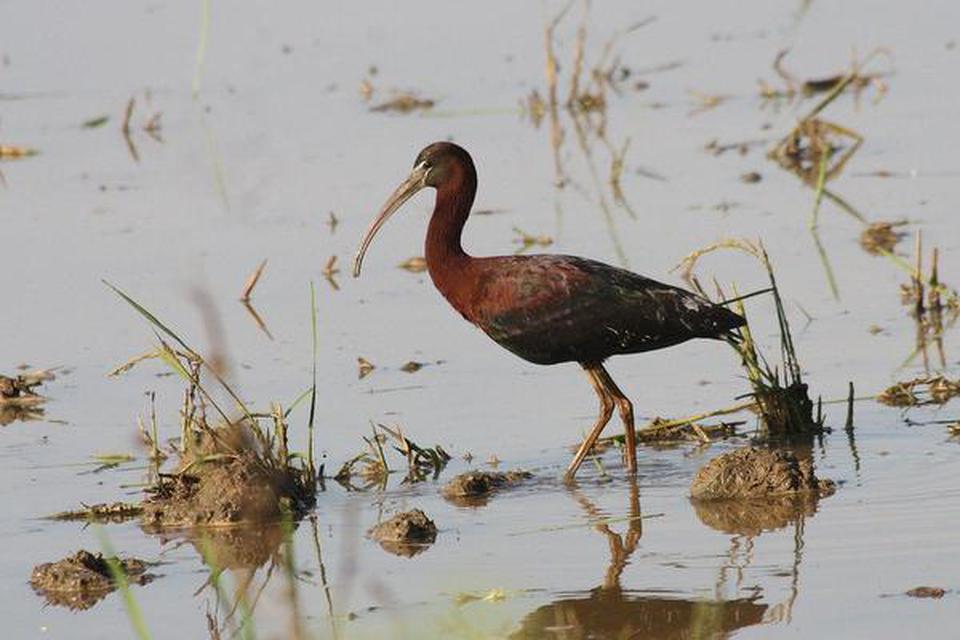58% increase in waterbirds found during census conducted on January 6
A 58 per cent increase of waterbirds in the individual count compared to the previous year had been found in capital district in the Asian Waterbird Census (AWC) 2019 carried out on January 6. The AWC, which covered 10 different wetlands, found 4,936 birds from 61 species, including 28 migratory compared to the 3,121 birds from 57 species in 2018 and 4,442 birds from 77 species in 2017. In Punchakkari, the birding hotspot of the city, sighting of rare birds were less this time.
Two Painted Storks, 56 Pheasant tailed Jacanas, 3 Pacific golden Plovers, 32 Wood Sandpipers, 26 Glossy Ibis and 107 Garganey Ducks, which are migratory, were counted by the two field teams deputed to the vast and wide wetland. Count of waders like Sandpipers, Plovers, and Stints were very low compared to previous years and the number of migratory birds were about 500 more than that of 2018. Despite all these positive signs, habitat loss and stray incidents of poaching was observed by the team. Akkulam, once a haven for waterbirds, deteriorated over the years due to unscientific development and heavy pollution, is showing signs of recovery. Many migratory species including 20 Pheasant tailed Jacanas, 32 Garganey Ducks and 32 Glossy Ibis were spotted. A large flock of Barn Swallows, a wetland dependent bird, numbering around 350, was a marked sighting.

Glossy Ibis spotted in the Asian Waterbird census carried out in the capital district on January 6
Water quality
Presence of Lesser whistling Ducks and Purple Swamphens, which are resident birds, is a good indicator of the recovery of the water quality. Inspite of all negative factors, the count from the Lake stood at 391 birds from 33 species. Aruvikkara Reservoir, the main source of drinking water for the city, still remains a good habitat for birds. There is a considerable increase in the number of wetlands species from 10 to 22 and marginal increase in the number of birds from 196 to 213 compared to 2018. The extensive paddy fields in Mosque Lane, Kesavadasapuram and the two ponds within the Museum and Zoo showed a decline in the number of birds. The species count went up from 13 in 2018 to 23.
The Museum & Zoo Compound ensures a safe habitat for the endangered Oriental Darter, Asian Openbill and Black crowned Night Herons. Moreover, it is a nesting ground too for Oriental Darters. The Kannammoola Thodu showed a decrease in the bird count with the number of birds dipping to 249 compared to 315 of 2018. Kadinakmulam wetlands had a marked increase in its bird count than last year. There were 830 birds belonging to 34 species, whereas in 2018 it was 363 from 11 species. The team covering Poovar estuary and its shores listed out 743 birds belonging to 24 species including a flock of 102 Black headed Gulls, 16 Common Terns, 120 Common Swallows and 206 Black Kites.
The AWC was conducted by WWF-India with the support of Social Forestry Wing of Kerala Forests and Wildlife Department and Department of Museum & Zoos. The teams were led by AWC Coordinator & Senior Education Officer A. K. Sivakumar.
Birding hotspot
Renjan Mathew Varghese, State Director, WWF-India said the WWF is to come up with the ‘Punchakkari Protection Forum’ a consortium including panchayats, government departments, State Biodiversity Board, NGOs, birders and other concerned citizens to stand and act for the birding hotspot of the capital.